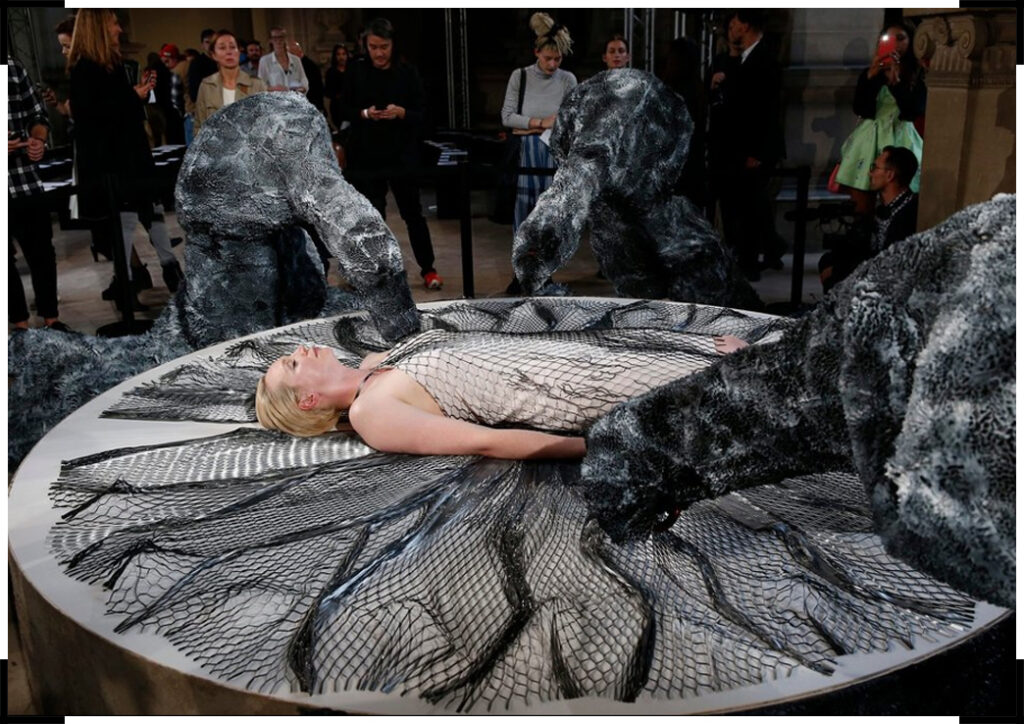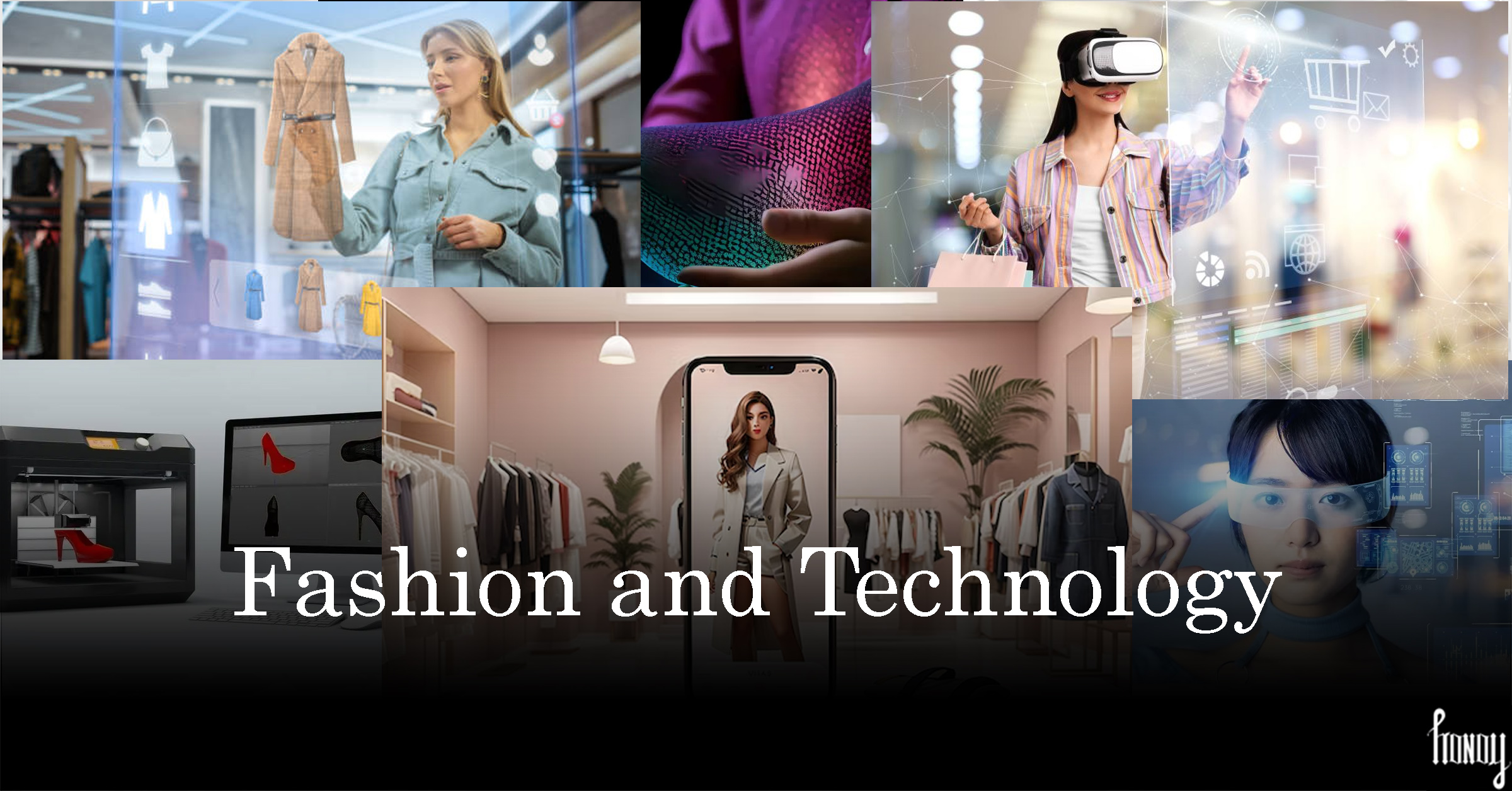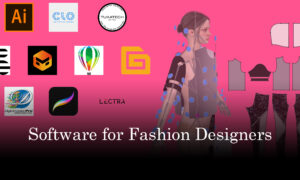Introduction to Fashion and Technology Overlap
Half a century ago if someone would have sad that there will be technologically advanced machines that can print out clothes, one would assume it to be words of a science fiction writer. But fast forward to the 21st century, and today we have 3D-printed clothes and accessories. This is the magic of technology, and the field of fashion has done wonders with it. This blog will look at fashion and technology as partners who have come a long way from merely mechanical weaving of textiles to virtual trial rooms with AI.
As we have seen that fashion and technology are two industries that are on a constant roll of change. It will be difficult to decided that which moves faster when it comes to evolution. But there is an interesting portion where these two industries overlap, that where fashion is elevated above the mundane when in the hands of technological advancements. This blog will analyse 7 ways in which fashion and technology overlaps.
1. Wearable Technology
Wearable technology is any kind of electronic device which when worn can track, analyze and transmit personal data about the user’s body. But that does not mean that the device has to look bulky and ugly. Today, wearable devices have become a significant trend amongst the fashion enthusiasts, integrating fashion with technology.
A very popular example and which is now a common sight is the smart watch. First, designed and released in 2015, by the Apple Inc., the Apple Watch combines sleek design with various tech features like fitness tracking, heart rate monitoring, and notifications. Its smoothness of design and limited editions color are a craze amongst Apple devotes.
Another great example of a wearable technology is Levi’s Commuter Trucker Jacket: Introduced in 2017, this amazing product of fashion and technology, the jacket, made in collaboration with Google, uses conductive yarn to interact with smartphones, allowing wearers to control music and receive calls with a simple gesture.
2. Smart Fabrics
Smart fabrics, also known as e-textiles or intelligent textiles, integrate technology into textiles to provide added functionality beyond traditional fabrics. Smart fabrics incorporate technology directly into the material, offering functionalities beyond traditional fabrics. This technology uses material science of conductive fibres and concepts of electronic integration to produce intelligent fabrics that can record and transmit data from the human body.
For example, the Clim8 launched their Smart Thermal Clothing in 2018.The garments made of these smart fabrics, automatically adjust to the wearer’s body temperature, providing optimal comfort. Similarly, the Lumo Run Shorts are another example where fashion and technology comes together and blend seamlessly. These shorts, introduced in 2016, have sensors that monitor and provide feedback on running form to help improve performance and reduce injury.
3. 3D Printing in Fashion
3D printing is revolutionizing fashion design and manufacturing, allowing for intricate designs and custom fittings. 3D printing, also known as additive manufacturing, is a process of creating three-dimensional objects from a digital file by layering materials. The science behind 3D printing involves several key principles and technologies across different disciplines, including materials science, engineering, and computer science. This amazing advancement has been adapted by fashion as if it was meant to be.
A notable example of fashion and technology coming together in 3D printing are the exemplary designs of fashion designer Iris van Herpen. A pioneer in using 3D printing for haute couture, van Herpen first incorporated 3D printing into her work in 2010. She collaborated with the architect and professor Neri Oxman and the 3D printing company Materialise to create a collection called “Crystallization,” which debuted at the Amsterdam Fashion Week.

Another example of use of #d printing in fashionable item is the Adidas Futurecraft 4D. The Adidas Futurecraft 4D is an innovative footwear line that incorporates cutting-edge 3D printing technology to create high-performance athletic shoes. Launched in 2017, these shoes feature a 3D-printed midsole designed to provide tailored support and comfort.
4. Virtual and Augmented Reality
VR and AR are transforming the fashion industry, in ways that were unimaginable a few decades ago. From enhanced shopping experiences (virtual fashion shows and virtual trial rooms) to design and prototyping the list of areas where fashion and technology of virtual and augmented reality come together is ever increasing. VR is being seen as the next big thing not just in customer engagement but also in training and education of fashion individuals.
A relevant example of this collaboration of fashion and technology can be seen when in 2015, the fashion giant Tommy Hilfiger introduced VR headsets in their select stores, allowing customers to experience runway shows.
A more democratic example is when IKEA Place App was launched. While not strictly fashion, this app, launched in 2017, uses AR to help customers visualize furniture in their homes, showcasing the potential for similar technology in fashion retail.

5. Artificial Intelligence and Fashion Design
While the above examples were those that saw the coming together of fashion and technology in creating products and experiences. A more ‘behind the scenes’ integration of fashion and technology is when AI is being used in fashion design, trend prediction, and personalization, making the design process more efficient, data-oriented and consumer-centric.
For examples, Stitch Fix, an online personal styling service, leverages artificial intelligence (AI) extensively to enhance its fashion offerings and improve customer experience. They use AI algorithms to recommend clothing based on user preferences and feedback. Also, inventory management and trend prediction has also become more efficient with use of AI.
Similarly, in 2018, H&M started using AI to analyze store returns and allocate new stock accordingly, optimizing inventory management. In a surprising use of AI in virtual merchandising, H&M used AI in optimizing store layouts by analyzing customer flow and behavior patterns. This ensures that high-demand products are placed strategically to maximize visibility and sales.
6. Sustainable Fashion Through Technology
Technology is playing a crucial role in promoting sustainability within the fashion industry. The aim is to reduce the environmental impact of the fashion industry while promoting ethical practices. The few ways in which fashion and technology are working together to make the fashion industry more sustainable are:
Recycled and bio-based materials: Technologies have enabled the creation of fabrics from recycled materials such as plastic bottles, old garments, and ocean plastics. Innovations in biotechnology have led to the development of sustainable fabrics like bio-leather made from mushroom mycelium, and fabrics derived from algae or pineapple leaves.
Waterless Dyeing: Technologies like CO2 dyeing use supercritical carbon dioxide instead of water to dye fabrics, significantly reducing water and chemical use. This method is not only more sustainable but also results in vibrant colors and reduced processing times.
Blockchain Technology: Blockchain provides a secure and transparent way to track the journey of a garment from raw material to finished product. This technology ensures that ethical practices are maintained throughout the supply chain and allows consumers to verify the sustainability claims of brands.
7. Fashion E-commerce and Digital Platforms
E-commerce has revolutionized the fashion industry, reducing the distance the once untouchable fashion dreams and the general public. Today, the online shopping platforms are making it easier for consumers to buy the latest trends. Similarly, the social media platforms have given new reach to the fashion brands, and they have found more audience. Read how social media has actually impacted fashion in my blog The Impact of Social Media on Fashion.
Conclusion
Thus, we can see how fashion and technology are converging in exciting ways, creating new possibilities for design, production, and consumer experience. From wearable tech and smart fabrics to AI and sustainable innovations, this synergy is shaping the future of fashion.
As technology continues to advance, we can expect even more revolutionary changes in the fashion industry. We can for sure say that with technology lies the future of fashion, but it is also our duty to use this power mindfully and judicially.
Please comment if we have missed any aspect of fashion and technology and do share how these two have come together in your day-to-day life.





























Pingback: International Luxury Fashion Market In 8 Points